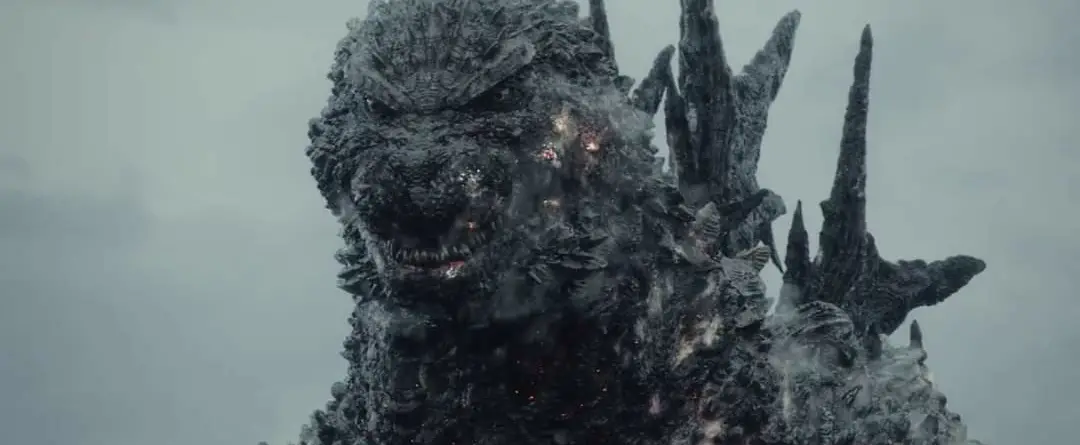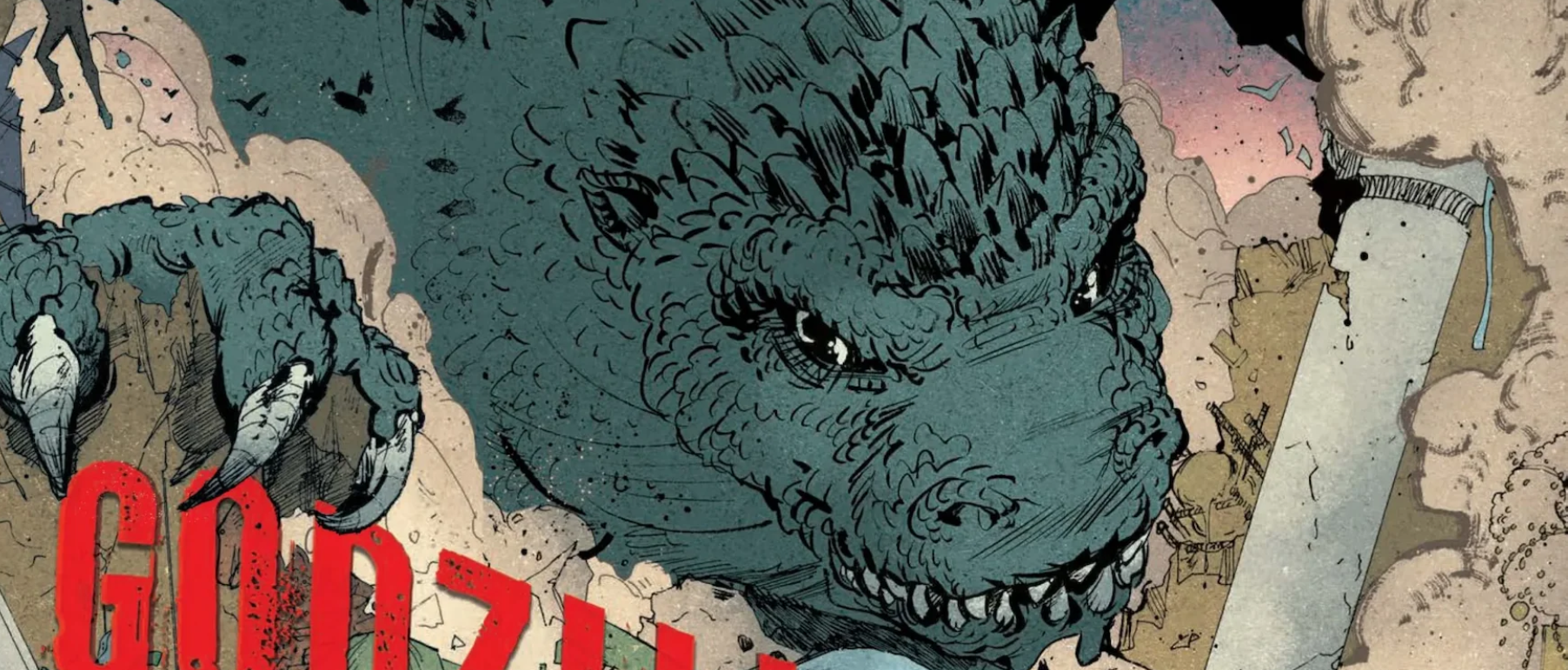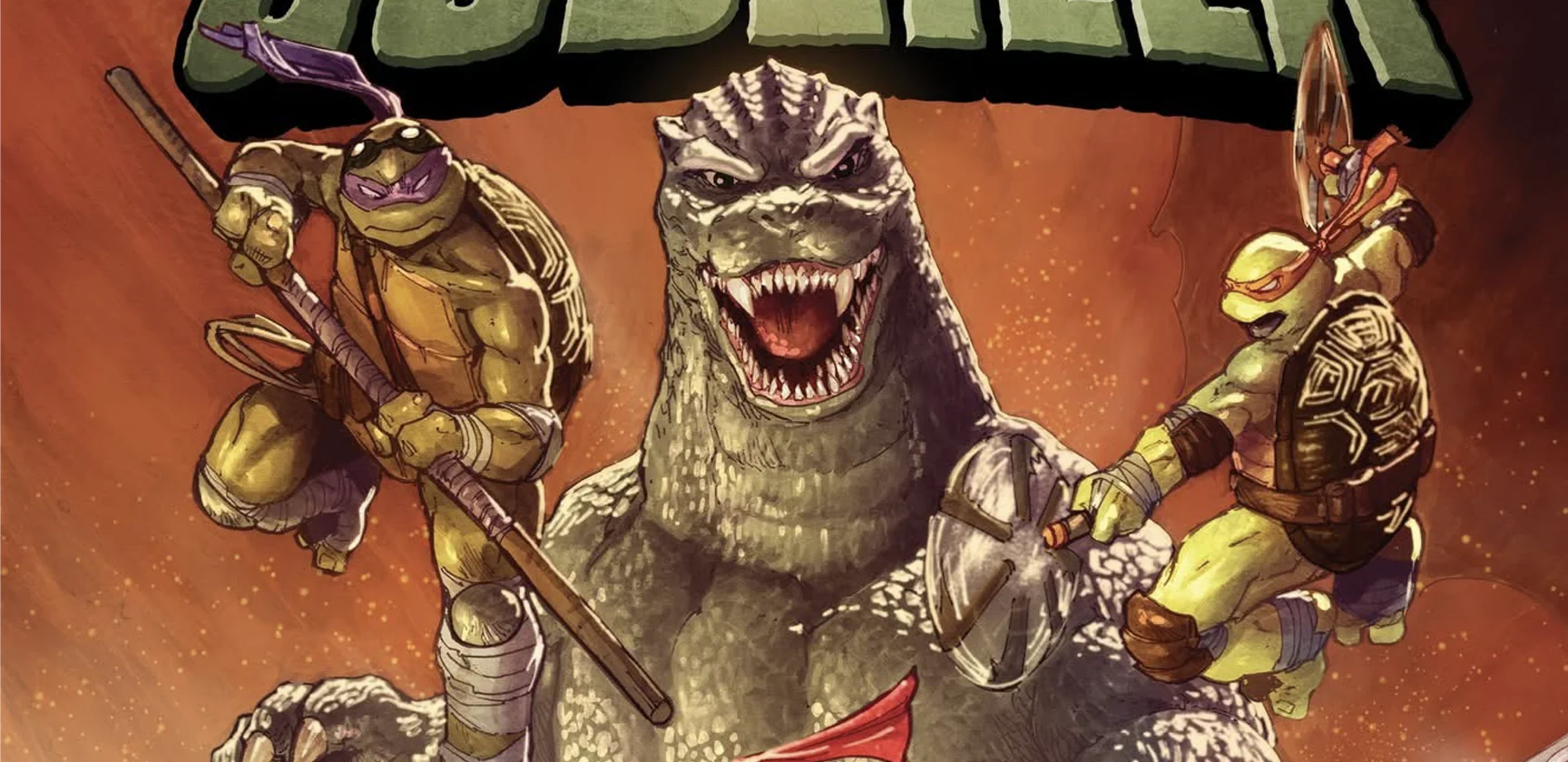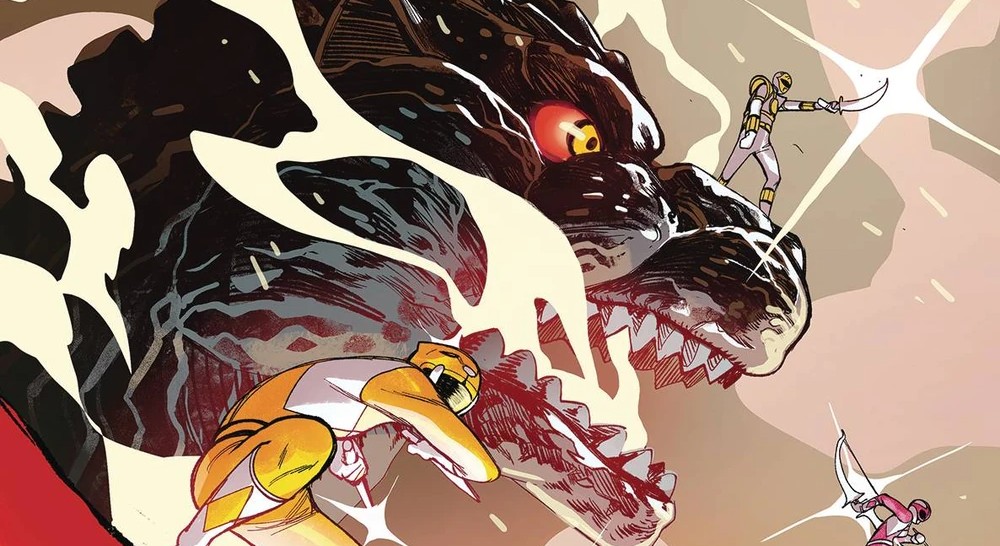During the press tour for The Great War of Archimedes (2019) [Arukimedesu no taisen], Takashi Yamazaki stated, “I think it’s best to make an anti-war movie that only focuses on the horrors of war”. Imagine a film where a disgraced Kamikaze pilot who didn’t die as he was “supposed” to must try to move on from deep mental wounds inflicted during his war time experience but those mental wounds return. Much like the Lucky Dragon No. 5 incident on March 1st, 1954, in-which a Japanese fishing boat off the coast of Bikini Atoll in the Marshall Islands was affected by the largest hydrogen bomb testing at the time. Japanese historians often like to label this event, “the third bombing of Japan” as bringing back the scars inflicted by World War II and the atomic bombings of Hiroshima and Nagasaki. Takashi Yamazaki takes a page out of this except in this case, it’s Godzilla.
The line, “This is… The same as before” echoed in my head as I watched Godzilla lay Ginza to waste. The line mentioned is in direct reference to the bombings of Hiroshima and Nagasaki, something that went deep. Japan was officially in the minus as the title suggests. Godzilla: Minus One [Gojira: -1.0] is a film that provides the antithesis to the previous Godzilla director Adam Wingard’s words, “It’s just a big monster movie.” The film which is set in a post-war and decimated Japan does not lose sight of the importance of both its setting and its impact on our characters. The main character, Kōichi Shikishima (played by Ryunosuke Kamiki) is a dishonored kamikaze pilot who hasn’t been able to “end his war”. He finds himself opening his door to Noriko Oishi (played by Minami Hamabe) and an orphaned child (Akiko played by Kisuke Iida) but struggles to move away from the war because of the PTSD he has from events that occurred during his last few days in service.
As Shikishima and Oishi continue to grow, develop, and begin their lives again in a decimated Tokyo, spirits are up until one day while Kōichi is working alongside our supporting cast Kenji Noda (played by Hidetaka Yoshioka), Yōji Akitsu (played by Kuranosuke Sasaki), and Shirō Mizushima (played by Yuki Yamada) and are called to the wreckage of a United States destroyer. The crew soon learns the dark and horrifying story Kōichi holds inside. They soon figure out in Alien (the franchise) fashion that they are the decoy and are expendable. They were sent out to slow down Godzilla from reaching the coast of Japan until the Imperial Destroyer Takao arrives. The crew and this tiny vessel they’re in successfully avoid Godzilla until the Takao arrives only to see it get destroyed by Godzilla.
Tension rises as Godzilla’s appearance is inescapable now and it is kept out of the public’s eye until it is too late. Throughout the film, Yamazaki likes to make it clear the government is no help to the people of Japan and it is up to themselves to solve the issue. Something that you see frequently in his filmography. And something that mirrors similarities to that of the works by Ishiro Honda. The films of Ishiro Honda frequently had the reporters and scientists create and solve the issues with the aid of the government. Here Yamazaki takes it a step further and lets them solve it for themselves. In stark contrast to the majority of the Godzilla films, there is a surprisingly low amount of actual military or government inclusion in the film. Which, when you consider that at the time Japan was essentially a puppet for America, that doesn’t appear to be so far off from how it would actually happen. The US is too busy worrying about the Russians and the Cold War that they cannot help a country that is at the lowest it has ever been.

©Toho Co., Ltd
Eventually Godzilla makes landfall and we get to enjoy some classic Godzilla rampaging in Ginza as our main characters are trying to avoid the monster’s wave of destruction. The scenes that follow are some of the most horrifying images that have ever graced the reels of a Godzilla film. Yamazaki, once again calling back to Shusuke Kaneko’s work, creates some horrifying scenes of people being trampled or crushed by falling debris. The camera work and cinematography throughout not just the rampage sequence but the entirety of the film is beautiful. Takashi Yamazaki likes to give us our bang for our buck. This can also be seen in the special effects that do not disappoint whatsoever. Godzilla looks gorgeous and has almost no flaws that I could see with his CGI. The landscapes look so realistic that I can’t tell when it’s CGI and when it’s not. There’s even some special effects shots of Godzilla ravaging a countryside that look as if Yamazaki has access to the studio lot where a majority of the later Godzilla films were shot in with miniatures.
In a grandiose climax, our main character and supporting cast devise a plan to rid the world of the menace known as Godzilla. Their plan includes surrounding the monster with Freon tanks and sinking Godzilla to a depth of 1,500 meters crushing him with the water pressure.With a back-up plan to inflate large life vests under Godzilla to bring him back up to the surface that should cause an explosive decompression to occur.
The final fight is filled with beautifully reimagined Akira Ifukube tracks composed by Naoki Sato and some of the best sound design and mixing I’ve heard for a Japanese film. The fast pace edits and camera movements mixed with the amazing acting by our cast and the build-up to this dire situation, leads to one of the most immersive climaxes in any godzilla film. The runtime is 2 hours and 5 minutes but it does not feel that way. The film flies by (no pun intended) and keeps the audience engaged throughout the film with our heartfelt human story (which caused me to weep in the theaters). In classic Yamazaki fashion, Godzilla: Minus One is a beautifully written film that echoes the same things I love about his film Parasyte Part 1 (2014) [Kiseijū]. Everything is there for a reason and everything is explained by the end of the film. BUT it also makes the ending feel messy and incomplete making the viewer beg for more.

©Toho Co., Ltd
I find Godzilla: Minus One to be exactly what the franchise has needed for so long. A proper modern return to formula but with innovative ideas and concepts. The film feels as if it could have been something from the early Shōwa era that Ishiro Honda would have made. It is no doubt that the creators of Godzilla would love “Minus One” for its honest and true-to-origins approach and reminding the viewers where Godzilla came from and what he stands for. And that also echoes for the ending too… In true Shusuke Kaneko or Ishiro Honda fashion, “if nuclear testing continues, then someday, somewhere in the world… another Gojira may appear.” I won’t explain any further than that though… You’ll have to figure out what that means for yourself.
I go deeper into the film and explain more of my thoughts on my podcast Kaiju Conversation where me and my co-host Rex have covered the vast majority of Takashi Yamazaki’s filmography in hype for Godzilla: Minus One. You can listen to us on any podcast platform, so if you’re wanting more (spoilers included), definitely give us a listen!





